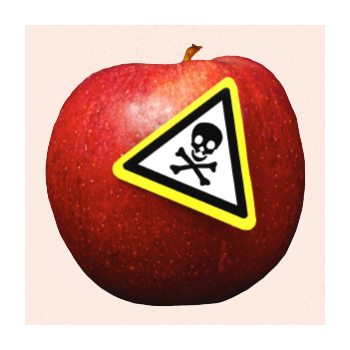


Sign-up for {N}power to get exclusive discounts, newsletters, members-only features, and more!

“The only possible guarantee of the future is responsible behavior in the present.”
― Wendell Berry, The Unsettling of America: Culture & Agriculture
“An apple a day keeps the doctor away,” the old saying goes, but what if the fruit harbors a deadly pathogen? A study out of India, published in March 2022, found drug-resistant strains of Candida auris on apples. According to the Centers for Disease Control and Prevention (CDC), C. auris is “an emerging fungus that presents a serious global threat.” Although C. auris doesn’t sicken most people who encounter it, it has evolved to be multi-drug resistant and is highly transmissible in hospital settings, where it can cause severe infections in immune-compromised or already sick patients.1 2 In 2019, the CDC classified it as one of the five pathogens “posing the most urgent threats to public health,” and more than 30 percent of patients who contracted it during hospital outbreaks in Texas and Washington D.C. in 2021 died within 30 days of infection.3 4
 However, the most compelling discovery of this study was not that the researchers found the dangerous pathogen on apples, but rather the context of the fruit where they detected it: The apples with C. auris were all conventionally grown and treated with fungicides post-harvest to prevent spoilage during long-term storage (organic standards do not allow any fruit or vegetable to be treated with synthetic fungicides post-harvest). And this finding, the researchers conclude, “suggests that fungicide application on stored apples and potentially other fruits could be a significant selective force for drug resistance in clinics.”5
However, the most compelling discovery of this study was not that the researchers found the dangerous pathogen on apples, but rather the context of the fruit where they detected it: The apples with C. auris were all conventionally grown and treated with fungicides post-harvest to prevent spoilage during long-term storage (organic standards do not allow any fruit or vegetable to be treated with synthetic fungicides post-harvest). And this finding, the researchers conclude, “suggests that fungicide application on stored apples and potentially other fruits could be a significant selective force for drug resistance in clinics.”5
The study included other fruit, but the researchers focused on apples because of their widespread cultivation and year-round availability worldwide. They collected 62 Gala and Red Delicious varieties—20 were fresh from orchards, including two organic orchards, and the rest were from long-term storage. Thirteen percent of the apples had drug-resistant C. auris colonies on their surfaces, including several strains closely related to those from hospitals in India and a handful that mirrored clinical strains from different parts of the world. The only apples with drug-resistant C. auris colonies were those that came from long-term storage, the researchers did not find C. auris on any of the orchard-fresh apple samples.6 7
Twelve different fungicides were detected on the long-term storage apples, and every apple containing C. auris had fungicide residue; four fungicides were discovered on the conventional orchard-fresh apples, and the organic apples had none.8 9 One class of fungicides found on the conventional long-term storage apples, triazoles, is particularly significant because they have similar characteristics to fungicides used to treat human infections, and prior studies have suggested agricultural triazoles could be a potential “selective force for cross-resistance to medical azoles [anti-fungals] in human-pathogenic fungi.”10 11
Meanwhile, in the United States, where apples have a value of more than $15 billion, fungicide resistance is increasingly an issue for growers.12 13 Still, the conventional status quo promotes a chemical-dependent “solution” when resistance arises in any agricultural setting. However, studies indicate that the exact opposite is needed. A 2018 study on herbicide-resistant weeds in the UK found that fields already plagued by resistant species were more likely to develop resistance to new chemicals. The only effective solution was to reduce herbicide applications.14
The evidence indicates an agricultural approach that works with Nature is the most viable method of preventing the development and managing the many forms of resistant bacterial and fungal species that threaten our modern world.15 So, why are we drowning the well-ordered diversity of her built-in controls with chemical silencers? The food on your plate today predicts one version of the future or another, because Nature always collects her dues—what will you choose? Choosing to fill your plate with organic foods is one way you can help tip the balance, creating a healthier and thriving future.



Sign-up for {N}power to get exclusive discounts, newsletters, members-only features, and more!